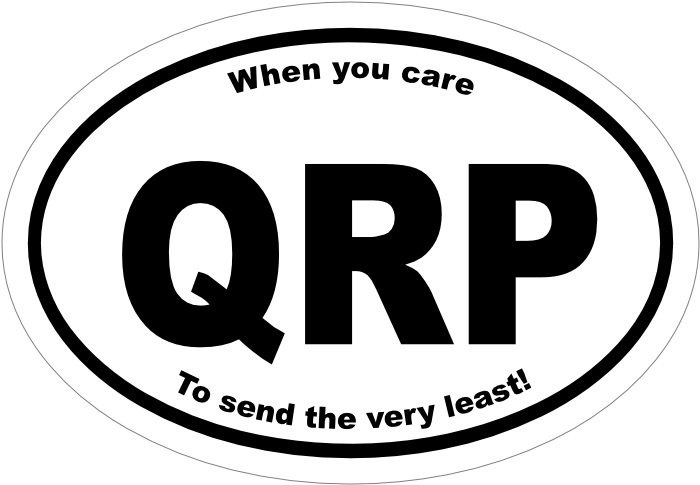What is QRP?
I guess we should start this conversation by defining what QRP is. QRP means “low power” or “low wattage” operation in amateur radio. It is a term used to describe the use of low power levels, typically 5 watts or less, to communicate over long distances. QRP operation emphasizes skill and efficiency in radio communication, as operators use minimal power to make contacts.
QRP is popular among amateur radio enthusiasts who enjoy the challenge of making contacts with limited power. It requires operators to employ efficient antennas, effective operating techniques, and often relies on Morse code (CW) as a mode of communication due to its efficiency.
QRP operation has its own dedicated events and competitions, such as QRP contests where operators compete to make the most contacts using the lowest power levels. Many QRP enthusiasts also build their own radios and equipment, as well as experiment with antennas and other components to optimize their stations for efficient low power operation.
Overall, QRP is a niche within the amateur radio community that focuses on minimalistic and efficient radio communication, providing unique challenges and opportunities for radio enthusiasts.
My experiment with QRP
I have always been one of those hams that was anti QRP. Recently, however I put up a DX Commander antenna at the house, which is made up of several resonate 1/4 wave vertical elements covering 40m, 30m, 20m, 17m, 15m, 12m and 10m. Callum McCormick M0MCX from England is the maker of the DX Commander and he describes it as follows:
The DX Commander vertical system is based on the same technique as a fan dipole. Effectively a number of elements present themselves to your load and self-select and achieve efficient quarter-wave performance on all bands, according to which quarter-wave elements are installed.
Callum McCormick from his DX Commander Website
For the purpose of this article I am going to concentrate on the 40m band. After putting the antenna up and laying out a total of 16 radials (16 feet each), it was time to do some tuning. I was happy with the SWR shown using my analyzer in the chart below for 40m, after some trimming and fine tuning.
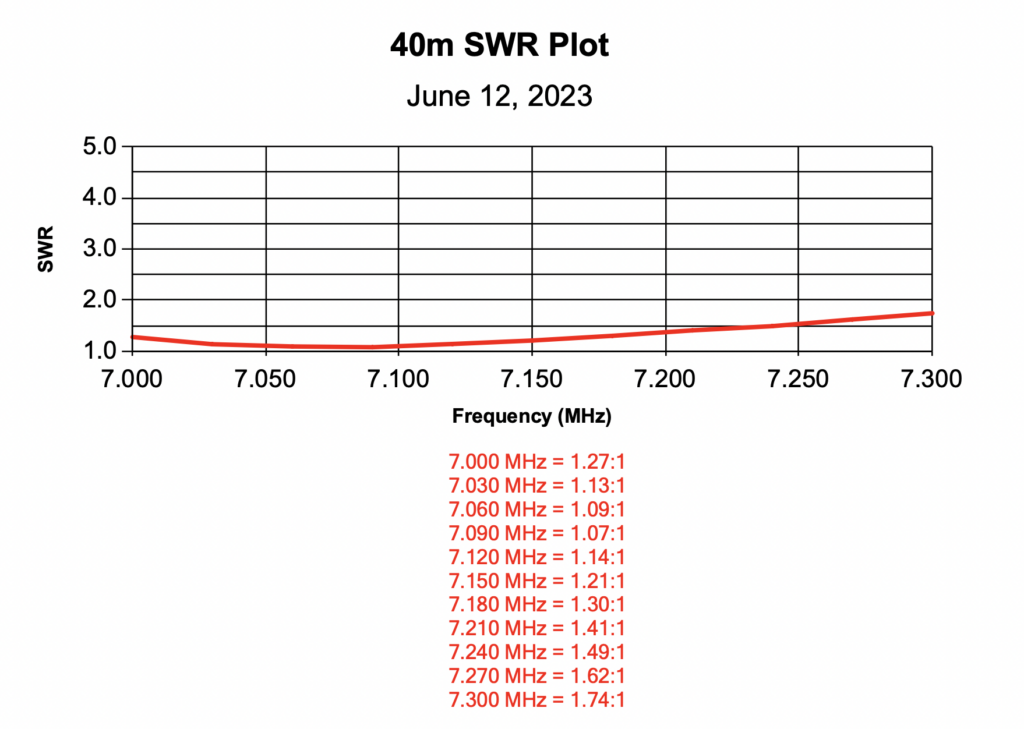
It Is All About The Antenna In Ham Radio
Here is a tip not only for QRP operation, but the secret to having a good station is your antenna system. in QRP operation it is very important that your antenna be resonate. What is a resonate antenna you say?
A resonant antenna is an antenna that is designed to operate efficiently at a specific frequency or a narrow range of frequencies. It is constructed in such a way that its length or physical dimensions correspond to the wavelength of the desired frequency.
When an antenna is resonant, it has a natural tendency to efficiently radiate or receive electromagnetic waves at its resonant frequency. This is because the electrical length of the antenna matches the wavelength of the signal, resulting in a match between the antenna and the transmission line or feedline connected to it.
Now it was time to do a little experimenting, I mean is that not exactly what our hobby is about?
The Parameters For This Experiment?
Transceiver: Flex 6400
Feed Line: RG-213
Transmit Antenna: DX Commander
Receive Antenna: DX Commander (the Flex allows the use of different antennas for transmit and receive)
Power Level: 1 watt
Antenna Tuner: Bypass Mode (tuner turned off)
Operating Time: 1 hour
Operating Mode: FT-8 using WSJT-X
Where The 1 Watt Signal Was Going
I wanted to see exactly where my signal was going first, luckily we have a great tool called PSKReporter to show us exactly that. I ran my experiment for around 15 minutes and found my 1w signal was getting out pretty well. The noise floor based on my meters on the Flex showed between -100 to -110 db, which equates to a S2 to S3 noise floor level .

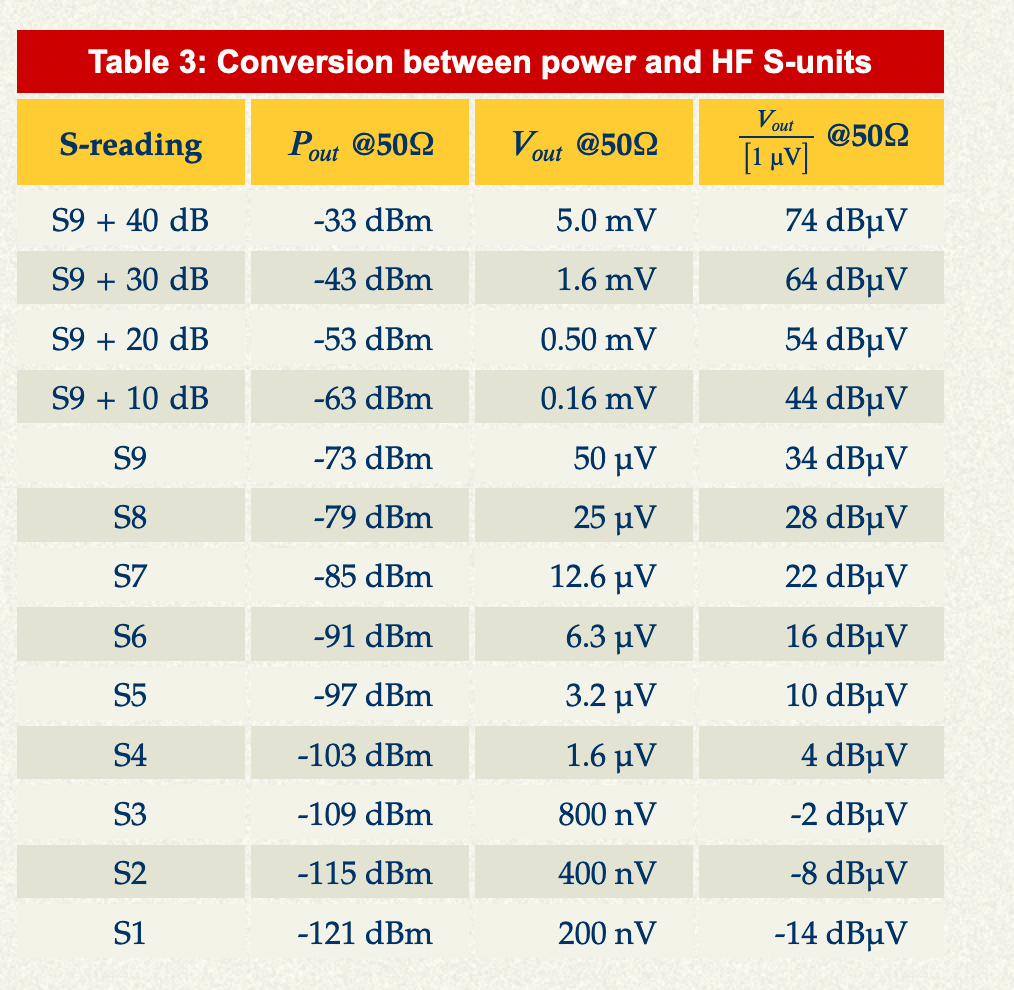
So where was that 1w signal going with those conditions? Well have a look below to see where my 1w signal was being heard. Keep in mind this is where my signal was being heard, not where I was actually making QSOs.
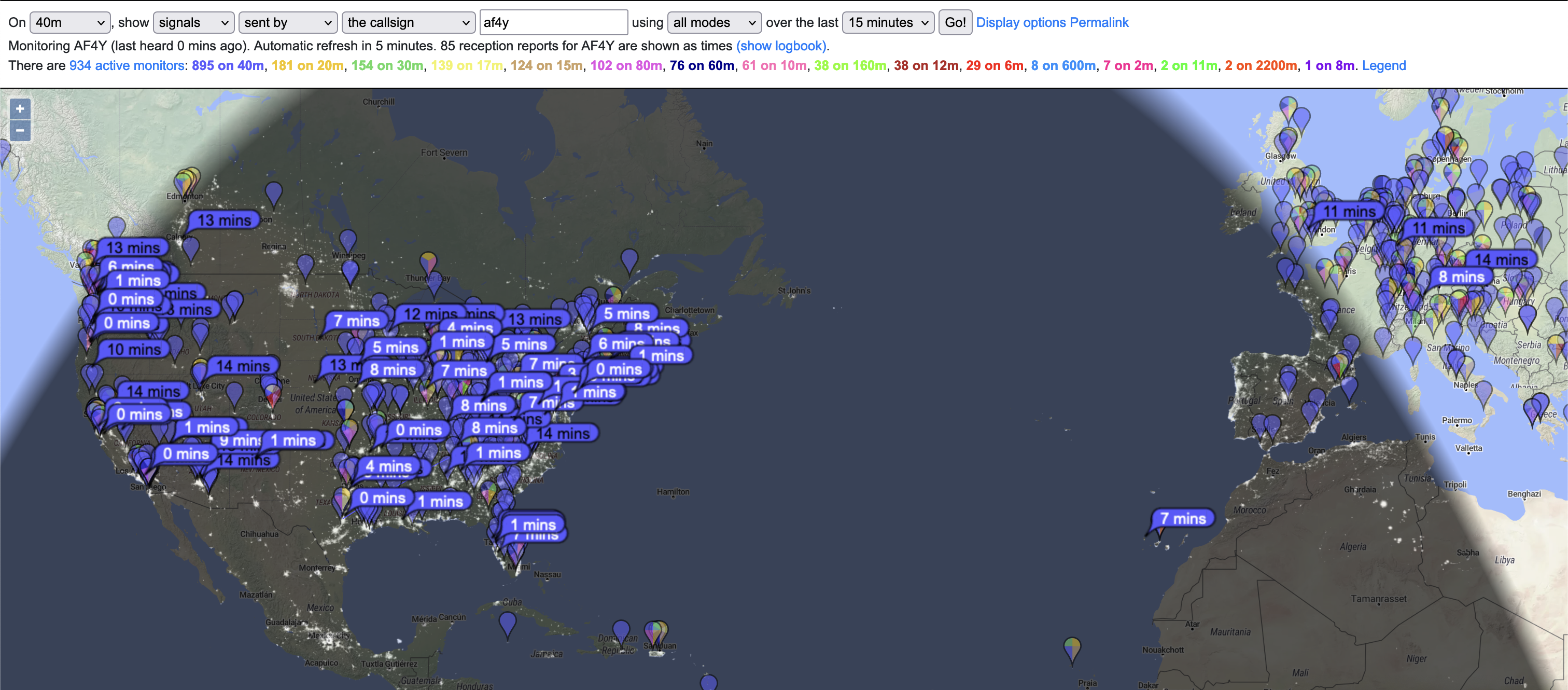
Where I Made Contacts with my 1 Watt Signal?
I made a total of 11 contacts in about one hour of operating (11:30pm to 12:30am). At the time of publishing this article 10 out of 11 have been confirmed. Here is a list of those contacts and a map showing my QTH. There were others who attempted the make a QSO in addition to these 11, but conditions just were not there to make it successful.
- K0YL in North Dakota
- KM9Z in Arizona
- AK1P in New Hampshire
- N5QS in Arizona
- WB4KDI in Alabama
- K3IMC in Georgia
- N0ELS in Missouri
- WA4VGZ in Tennessee
- WA3DB in Washington
- N5WXB in West Virginia
- WD0GOL in Minnesota
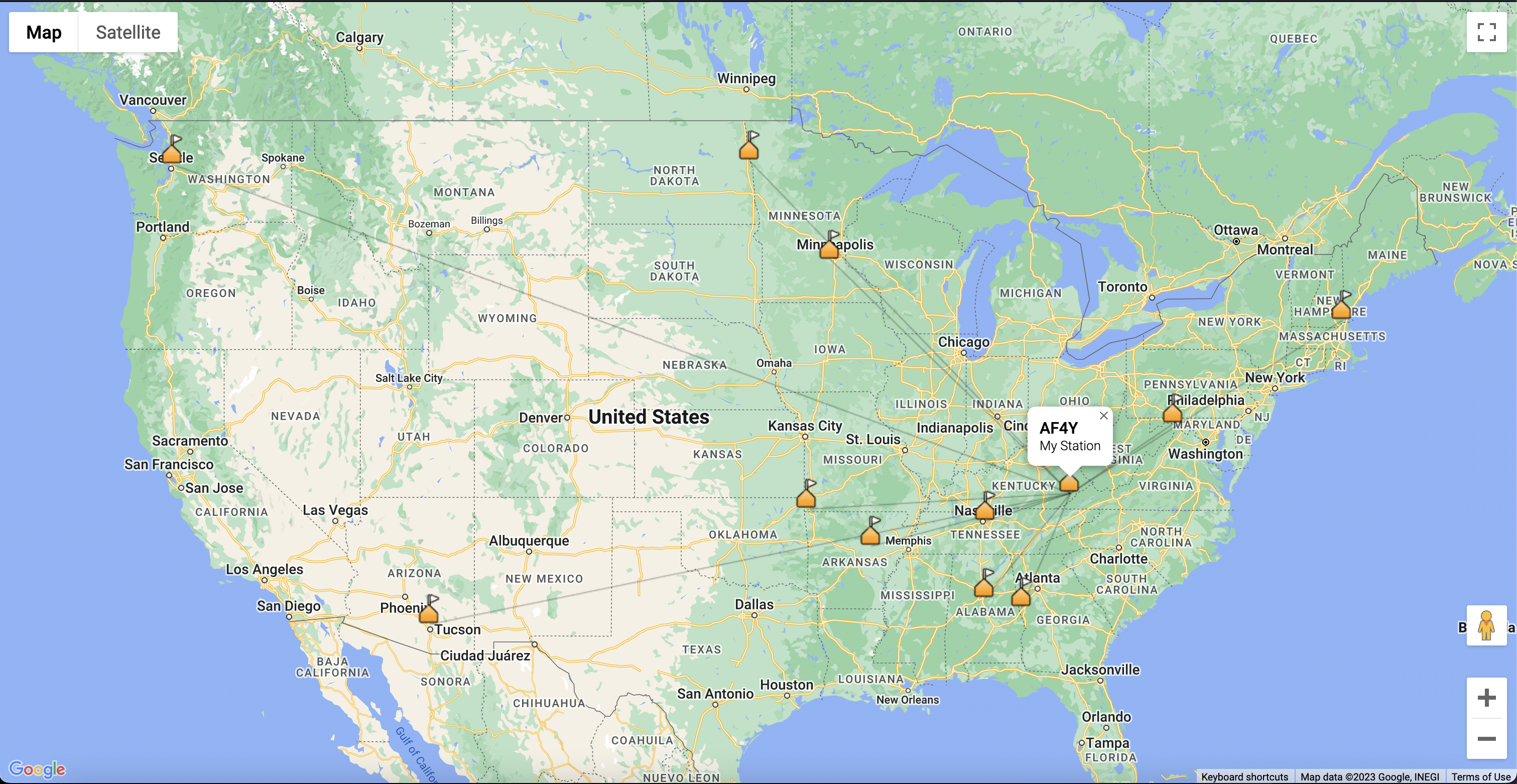
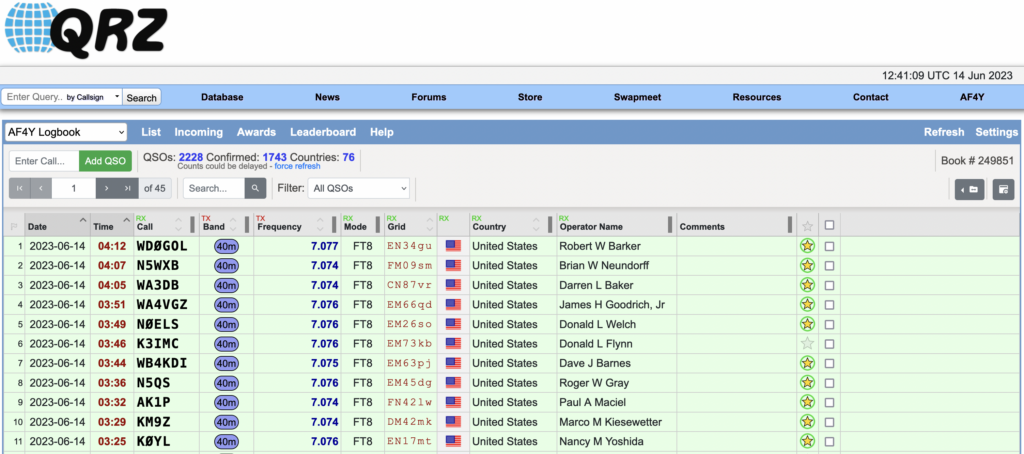
Tips For Operating QRP
I stole the below tips from an article written by WB0ISG, for QRP success.
Using low power is a challenge but it is not nearly as hard as some would lead you to believe. With these four simple pointers, you too can have QRP success.
Donald R Goetz, WBoISG
Use efficient antennas
With QRP, smaller is not always better. In fact, those who have the most success use efficient antennas. Usually this means a full size antenna. At my QTH and while operating portable, my go-to wire is the dipole. It is simple and cheap to get in the air. However, my dipole for 80 meters is technically a compromise antenna since it uses traps. At the end of the day, any antenna is better than no antenna, so get as much copper in the air as you can and get on the air.
Use efficient modes
When all you got is 5 watts, make the most of it by using CW or digital modes. Imagine that you have to communicate across the distance of a mile. You have two options: a flashlight and a megaphone. Both could work, but the flashlight used to send Morse will be more efficient than the megaphone will be.
When on the radio, don’t discount voice completely however. It will be harder to make QRP SSB contacts than CW ones at the same power level, but it is far from impossible. You never know when the propagation gods may smile upon you.
Know your propagation
Certain times of the day work better for certain bands. Even certain times of the year affect propagation. Using lower power forces you to make the most of what bands are open. Someone who’s using 100W or more stands a better chance when a band is marginally open but QRPers have no such luxury.
Even in the trough between solar cycles 24 and 25, I have had great success using low power. Experiment and discover which bands open to you throughout the course of 24 hours. The VOACAP propagation website or Proppy can help predict where your signal will go and when, but nothing beats getting on the air and experiencing it for yourself.
Spot yourself
People want to work you. There’s no shame in telling others where you have set up camp on the bands. Many other QRPers do the same and we tend to look for one another. There’s few things as gratifying as making a QRP to QRP contact over thousands of miles.
Have My Thoughts On QRP Changed?
I went into this experiment thinking 1w would not to cut it, when most operating FT-8 are running 30w to 100w and sometimes more. I was pleasantly surprised to see I was WRONG. I actually got excited seeing where the next contact would come from and if we could complete the QSO. So I think we need to correct the phrase in the title, LIFE IS NOT TOO SHORT TO QRP.
